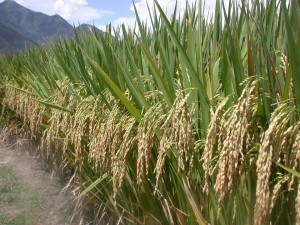VILLAGE LIFE EXPERIENCE
em Chão Sobral
Uma semana na aldeia : é esta a proposta que aqui lhe dirigimos.
Do acordar ao deitar, são cinco dias repletos de actividades que além de lhe provar que a vida no campo floresce de oportunidades, é também uma forma de lhe transmitir um conjunto de práticas. Pelo meio, atravessam-se refeições partilhadas num espírito de convívio bem como uma série de actividades nocturnas que vão dos contos tradicionais a outras artes da lareira….
De fora não ficam ainda as suberbas paisagens que funcionarão como mote para muitas das propostas que aqui lhe dirigimos.
Onde
Aldeia de Chão Sobral: uma pequena aldeia aninhada entre os 600 e 700 metros de altitude na Serra do Açor, de onde se avista a Serra da Estrela e a Serra do Caramulo. Dista 16 kms da aldeia histórica de Piódão, 11 kms do Monte Colcurinho (miradouro e local de peregrinação a 1242 metros de altitude), 3 kms do notável Santuário de Nossa Senhora das Preces, e 10 kms de Aldeia das Dez.
Residem em Chão Sobral cerca de 140 habitantes e uma população jovem muito ativa na Associação local para a realização de atividades variadas de animação cultural e recreativa, onde se incluem Passeios Pedestres e Passeios em Bicicleta Todo-o-Terreno - BTT.
Embora a maioria dos trabalhadores estejam a sair, e a voltar diariamente, para prestar serviços fora da aldeia, existem aqui diversas atividades com base nos recursos naturais locais: aguardentes de medronho e de bagaço, enchidos, compotas, queijo de Ovelha e de Cabra, produtos hortícolas, mel, artesanato em madeira e de xisto, facas “Corte-Real”, tapetes de fitas, tapeçaria de Arraiolos e lenha.
Programa
- Dia 1 de Abril
Chegada
- Dia 2 de Abril
Manhã:
Pastoreio de cabras na serra - José Mendes
Roçar mato para os animais - Cuidar das ovelhas e coelhos - Mário
Tarde:
Enchidos parte 1 - Preparar a carne – Isabel
Pão de milho - Luciana
- Dia 3 de Abril
Manhã
Horta na serra - Raimundo
Facas - Cecília e José
Tarde
Forja – Agostinho
Tapetes de fitas - José Martins
- Dia 4 de Abril
Manhã
Fazer lenha com machado - José Silva
Plantar árvores, podar e enxertar - José Dias
Tarde
Enchidos - Encher as chouriças - Isabel
Xisto criativo - Artesanato em Xisto - Vítor Curinha
- Dia 5 de Abril
Manhã
Raízes Criativas - Artesanato em Madeira - Nelson
Fazer muros/socalcos com pedra seca - Manuel
Tarde
Queijo de cabra - Luciana
Fazer muros/socalcos com pedra seca - Manuel
Dia 6 de Abril
Manhã
Ciclo do Medronho - Armando
Queijo de ovelha - Conceição
Tarde
Ciclo do Medronho - Armando
Coscureis - Bolos Tradicionais - Maria Clara
- Dia 7 de Abril
Dia livre para passeios e afins
Custos e Condições
>> 220 EUR + IVA em regime de alojamento e pensão completa para a semana toda
>> 60 EUR + IVA por dia em regime de alojamento e pensão completa
>> 50 EUR + IVA por dia sem alojamento mas com acesso às formações e refeições.
O acesso a cada ateliê requer uma inscrição prévia dado que o número máximo de participantes por actividade não poderá exceder os doze participantes, pelo que serao admitidos um níumero máximo de 24 participantes a esta edição da Village Life Experience.
Inscrições
Agradecemos que todos os interessados nos contactem através do mail farmerslifeexperience@gmail.com ou dos seguintes números de telefone: 216 073 905 e 926 506 033
Links
>> www.farmerslifeexperience.com
>> http://tradicional.campingcarportugal.com/locais/local17.htm
http://www.facebook.com/events/324226377625451/
Mais sobre Chão Sobral
http://chaosobral.org/hlcdomeuchao.htm
Grato pela divulgação,






































